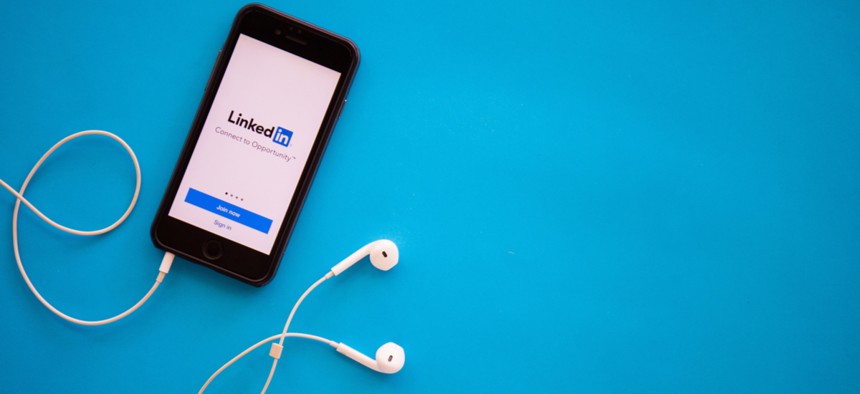Unsure Who to Accept or Reject on LinkedIn? Consult This Flowchart

aradaphotography/Shutterstock.com
LinkedIn can be a goldmine for professional opportunities if you know where to look.
LinkedIn can be a cesspool of facades and self-important descriptions. But it’s also a goldmine for professional opportunities. It can help connect you to reputable experts in any number of fields, and can keep you hopeful about job prospects.
But sometimes it’s annoying, and even stressful, to figure out whose LinkedIn connections to accept and whose to ignore. I’ve taken to ignoring some requests for weeks, then engaging in some twisted Rorschach test as I analyze each person—a sales rep, my former classmate, that dude I dated 10 years ago—via completely arbitrary standards.
What should be a very simple decision quickly becomes an energy suck. Yes, you worked together, but you couldn’t stand him—rude to decline? She went to your university but you’ve never met her—worth the connection? He wants to work for you, but you’re not hiring—keep him around? He was a really good kisser—but wtf, this is LinkedIn?
With some help from networking expert Kelly Hoey, author of Build Your Dream Network: Forging Powerful Relationships in a Hyper-Connected World, we set out to develop the definitive guide to managing your LinkedIn requests.
1. Know your LinkedIn goal
According to Hoey, a though thing about LinkedIn is that it offers technology that we all feel we should be able to use in the same way—we all log in the same way, build our profiles the same way, click the same buttons—except we absolutely do not. “We forget that while this is a technological service, there’s a human relationship behind it, and behind every LinkedIn request, which is why we struggle so much with deciding who to ignore,” she says.
To resolve the dissonance, explicitly ask yourself what your goal is. “Some people use LinkedIn very narrowly, creating a curated community of connections they know and work with, but other people throw it wide open,” Hoey says. “[T]hese dispositions can change in different phases of your career or job search, which is what causes confusion.”
In fact, shifting your perspective on how you want to use LinkedIn over the course of your career isn’t just okay, it’s essential if you want to be able to flex beyond your present company or industry. Besides, you can always remove connections should your community become too large at any given career stage.
2. Remember the vitality of a personalized message
“I rarely see people so relieved as when I tell them, point blank, that if someone connects with you via LinkedIn and they don’t include a personalized message, don’t overthink it—just reject,” says Hoey. Crafting that 300-word personalized message is an art unto itself. It takes more than a nano-second and requires some level of critical thought.
Whereas LinkedIn once left the decision to write a personalized message completely up to the user, it now prompts you with a reminder to write a note every time you connect with someone:

“No personalized note, ignore,” says Hoey, “because if you don’t know the person and they’ve now asked you to connect, they’re leaving it up to you to figure out why they’re reaching out. They’ve now put work and emotional labor on you, the person they’re connecting with, when it’s truly theirresponsibility to make their interest in you clear.” This mindset is particularly important if it’s a recruiter connecting with you via LinkedIn, says Hoey—it is literally their job to personalize their outreach, and if they don’t do that, then they aren’t worth your time.
Of course, this rule isn’t completely hard and fast. If you’re standing next to someone at a cocktail hour or conference and talking about connecting, it’s fine to just pull out your phone and skip the personalized message, says Hoey. Or if you’re connecting with a colleague, past or present, who you’re close with, or a good friend, the lack of a personalized message probably won’t be confusing or off-putting. Otherwise, take the stress off yourself, and let the personalized message dictate whether you accept the connection or not.
3. Never tolerate harassment, and control your own privacy
“It goes without saying that if someone makes you feel uncomfortable or attacked in any way via LinkedIn, you should immediately remove their connection,” says Hoey, also emphasizing the importance of reporting people whose LinkedIn behavior is inappropriate.
There is power, and stress-relief, in knowing that on LinkedIn you can report people for inappropriate behavior and control your own privacy levels. Fed up with all the requests she received from people she didn’t know, Hoey changed her privacy settings to require people to enter her email address before they can send a connection request. This drastically cut down on spam, harassment, and unwanted requests, she says.
The definitive LinkedIn request flowchart
Even with these high-level guidelines, you’re certain to receive requests you’re still not sure how to handle. To help, we’ve created this flowchart. Go forth and prosper:



